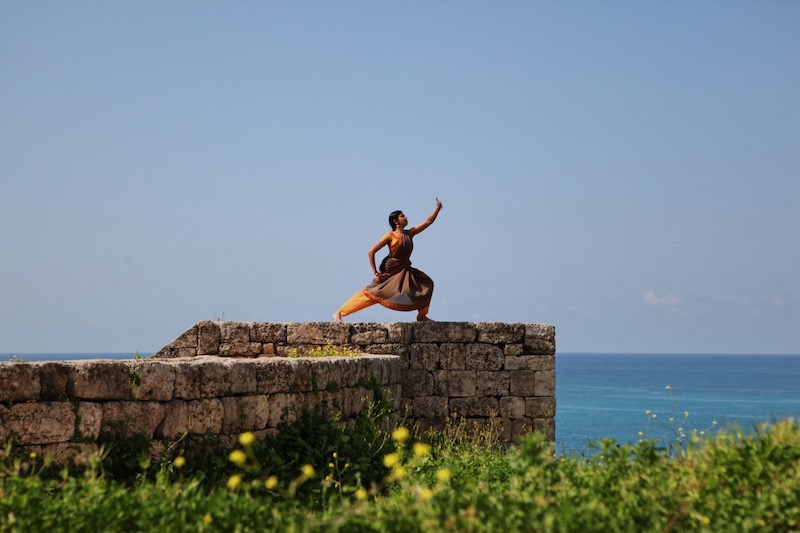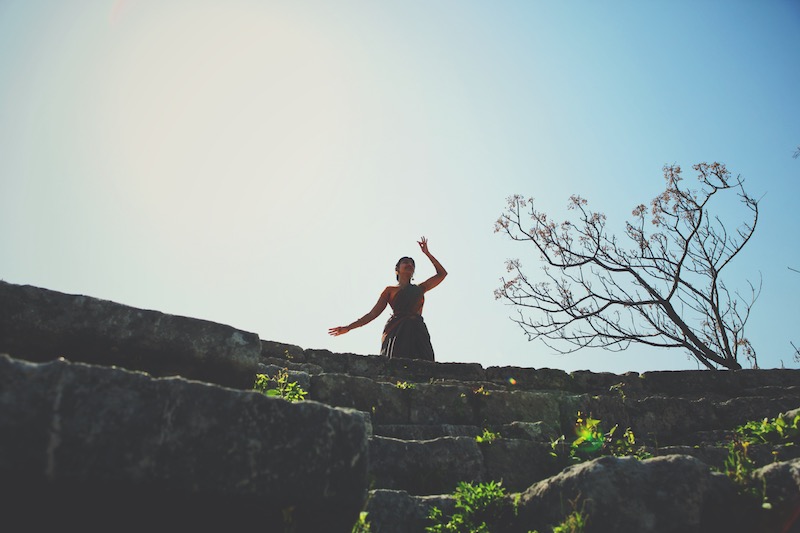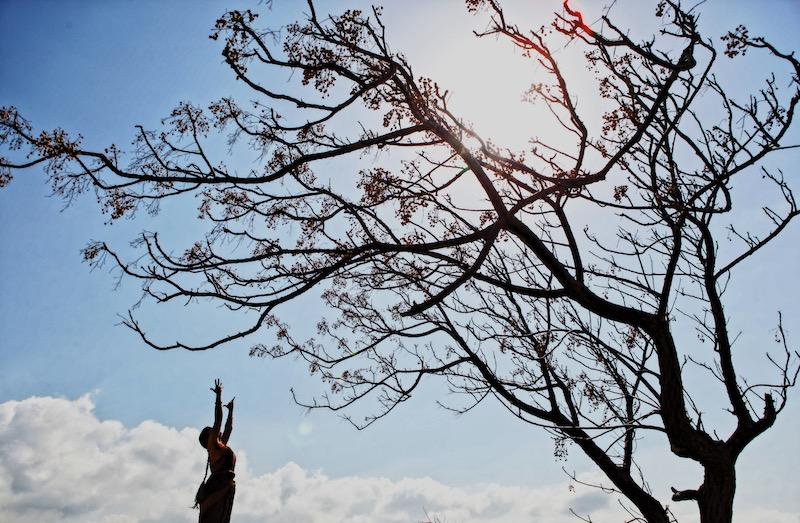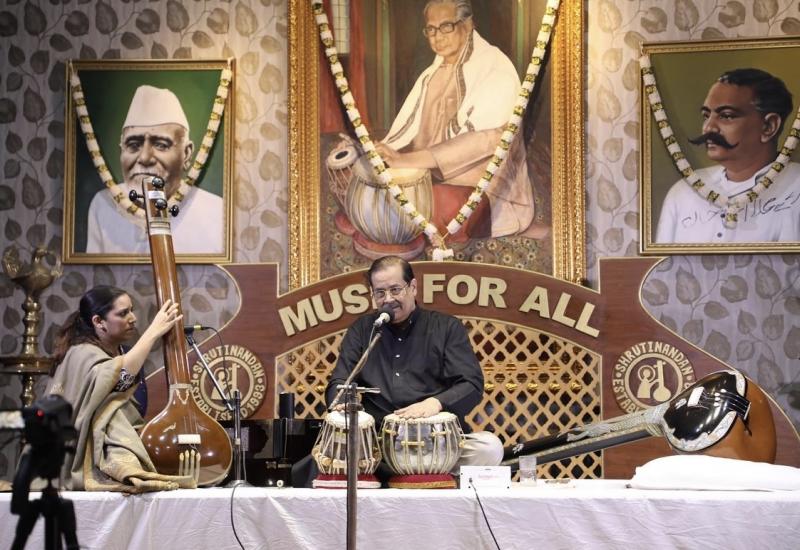Secular Themes in Bharatanatyam: Ideas for an Inclusive Future – Part I
Sangam, the earliest known literature from South India, provides an abundance of secular themes for the bharatanatyam dancer.
In the first of a series of three articles on secular themes in bharatanatyam, dancer Dr Prathiba Natesan Batley asks, is this the right time to expand the repertoire with non-religious narratives to reach a wider audience?
Above
Kurinji: Chasing parrots and other birds that come to eat the grain is a signature visual of Kurinji.
Swami naan undhan adimai endru ulagamellam ariyume!
Oh Lord! That I am your slave the entire world knows.
Thus begins one of the famous pada varnams often performed in bharatanatyam. The varnam itself is a rather recent composition by the 20th century composer Papanasam Sivan and its presentation tends to take a modern aesthetic in the more than 2000-year old tradition of bharatanatyam. By modern aesthetic I refer to the higher leg lifts (e.g. akasha charis), swifter turns (bramaris), deeper-seated aramandis (demi plie-like position), and 'innovative' rhythms.
Bharatanatyam has undergone metamorphosis with respect to name, presentation, aesthetics, physicality, background of practitioners, agency, and politics – some in the right direction, and some debatable. Practitioners and scholars may differ on these aspects but what cannot be refuted is the fact that the practice and presentation of bharatanatyam has seen a rise in its religiosity. Whether this is because of the 'revival' by people like Rukmini Devi Arundale, the increase in the number of upper class/caste practitioners, the recent changes in the political climate in India, or a combination of two or more of the above is not of interest to this series. But what is of interest is whether this turn to increased piety in bharatanatyam embraces people from other belief systems including those who are non-religious. Does it expect its audience and practitioners to possess a certain cultural capital such as mythological, religious background knowledge or even tolerance of the sometimes-regressive social norms of the yesteryears? Or should it evolve not just in its presentation but its content as well?
This series traces the changing demographic along with the increased globalisation of bharatanatyam while presenting the need for more secular themes that can help increase inclusivity in bharatanatyam. Some ideas are presented from the Tamil tradition of Sangam literature that is well over 2,000 years old. I emphasise Sangam literature because most poems and themes in the Sangam (except for some later Sangam era works) are secular. The aesthetic of Sangam literature lends itself to the beautiful and extensive abhinaya (gestures and body language) commonly found in bharatanatyam. The topics, moods, and characters are universal.

Occasionally, neythal poems concern the journey of the hero along the beach in his chariot as he comes to see his beloved.
For instance, consider the natrinai poem 45. The friend of the heroine (thozhi) asks the hero (thalaivan) to stop seeing her friend (thalaivi) because of the socioeconomic gap between them and says that her friend is virtuous although she might be from a 'lower' socioeconomic community. The rough translation of this song that is part of the first of the eight anthologies of Sangam literature and written between 100 and 300 CE reads thus:
My friend who belongs to a beautiful city that is adjacent to a coastal grove is the daughter of a fisherman who fishes in the sea. You are the darling son of the rich man whose swift chariot graces the ancient town with big flags. What use are we, who cut open to dry the fatty shark and drive away the birds [that come to eat them], to you? This place is filled with the stench of fish. Please go away post-haste. We live thanks to the bounty provided by the ocean. It may not be as rich as your life, but we still have people with honour in our society.
In essence, she asks him to leave if he has dishonourable intentions for her friend, the heroine. The poem paints a vivid picture of the grove next to the ocean, the livelihood of the fisherfolk, the stench that surrounds it, the socioeconomic gap between the hero and the heroine, the virtuosity of the heroine, and the daring attitude of the friend who seeks justice and honour for the heroine. As a bharatanatyam dancer I can imagine the myriad of possibilities this lends to present such beautiful poetry in motion through hand gestures, facial expressions, body movements, or a combination of all of these, or even a sanchari, that is, a further elaboration of the characters or the story as interpreted by the dancer. As a teacher and a global performer of bharatanatyam, such a presentation would allow me to connect more closely with a global audience because this set up could be in Pondicherry, India or Positano, Italy. The sentiments are human, and one does not need cultural, religious, or mythological knowledge to appreciate this poem. I would like the practitioner, the guru, and the student of bharatanatyam to think about this, for what is art if it cannot be accessed by everyone?

The heroine waits for her man to return from a journey.
Why am I emphasising secular themes in bharatanatyam as a way forward? According to the 2011 census, 41.5% of the population in the UK were non-Christians and only 1.3% Hindu. In fact, 25.7% indicated that they did not practise any religion. More recently, the Guardian noted that more than half of the UK public say that they do not belong to any religion. In the US, 26% of the population did not associate themselves with any religion and Hinduism was practised by only 1% of the population. Although in India Hinduism remains the religion of the majority (79.8%), this figure is questionable and probably an overestimate because according to the Indian constitution a Hindu is defined as someone who is not a Christian, Muslim, Jain, Jew, or Buddhist. This leaves agnostics, atheists, and other non-practitioners of religion to be automatically identified as Hindus.
Casting the numbers aside, bharatanatyam is striving to be more global than it ever was. Seasoned performers of bharatanatyam, Non-Resident Indian (NRI) bharatanatyam dancers, and Person of Indian Origin (PIO) bharatanatyam dancers are globetrotters and want to present their art to a wider audience. By presenting bharatanatyam as a mythological and highly religious art form, we are losing not just prospective audience but prospective future generations of practitioners. Moreover, we have a 2000-year old tradition that is rich in imagery, culture, characters, moods, and landscapes. Why not showcase it along with bharatanatyam? After all, we claim that bharatanatyam is universal. Why not truly make it universal, not just in concept, but also in content?
Photos
Dancer: Prathiba Natesan Batley
Photo Credit: Noir Barakat
Location: Byblos, Lebanon
Prathiba Natesan Batley is a statistician and a bharatanatyam and kathakali dancer.



















